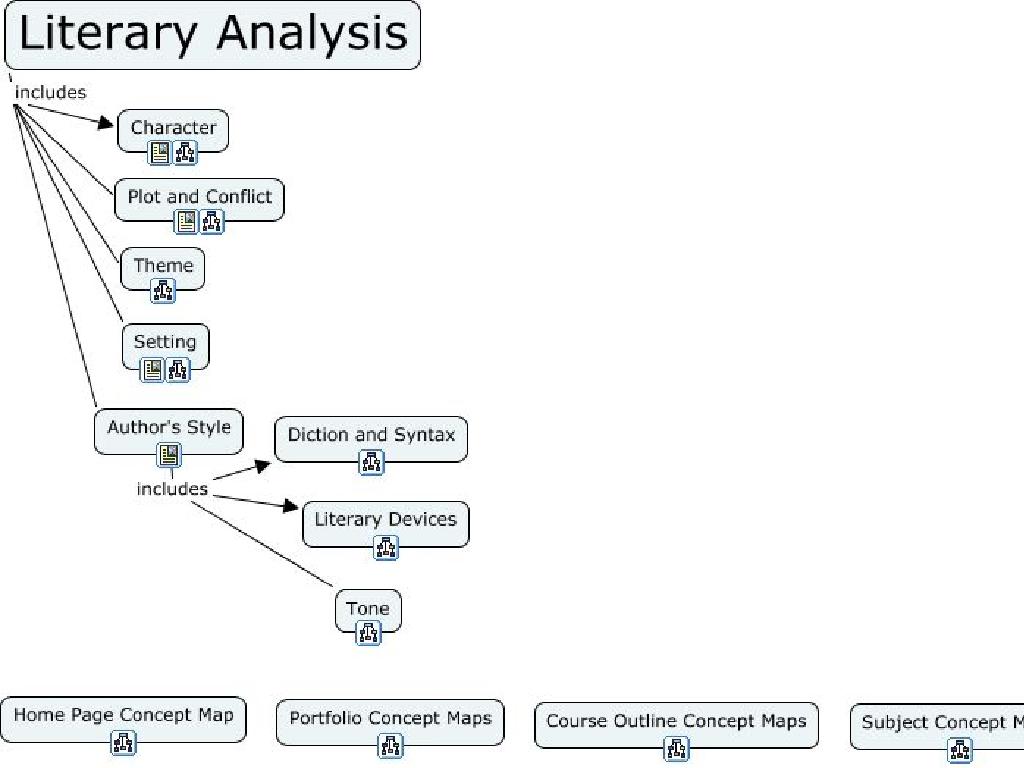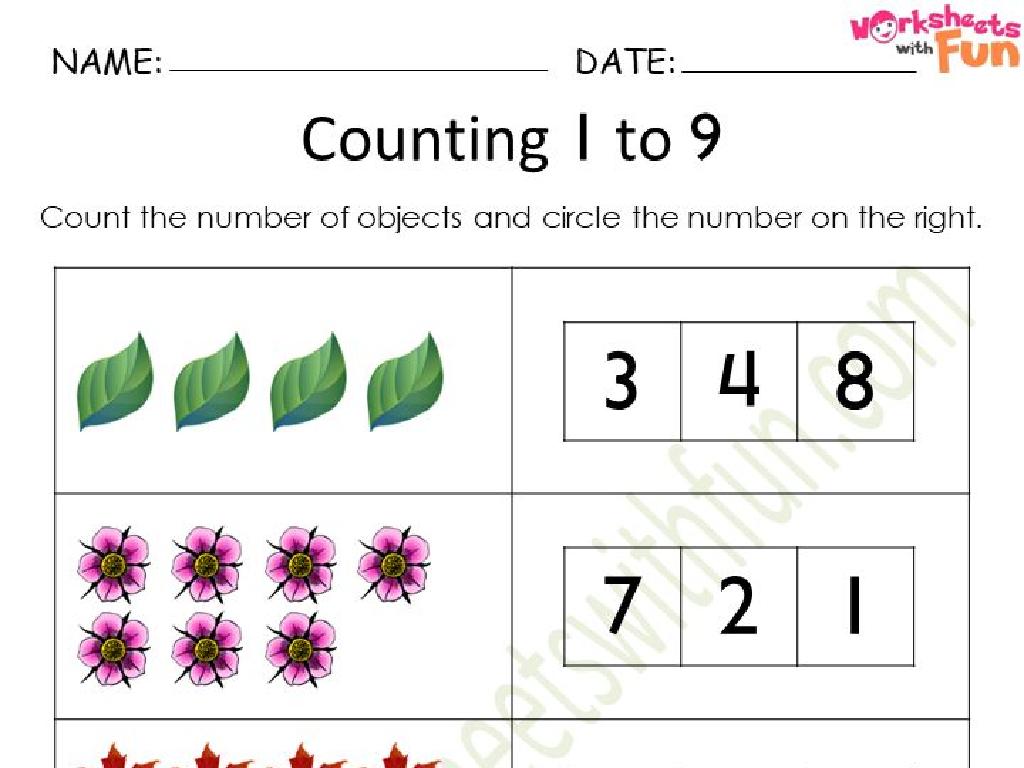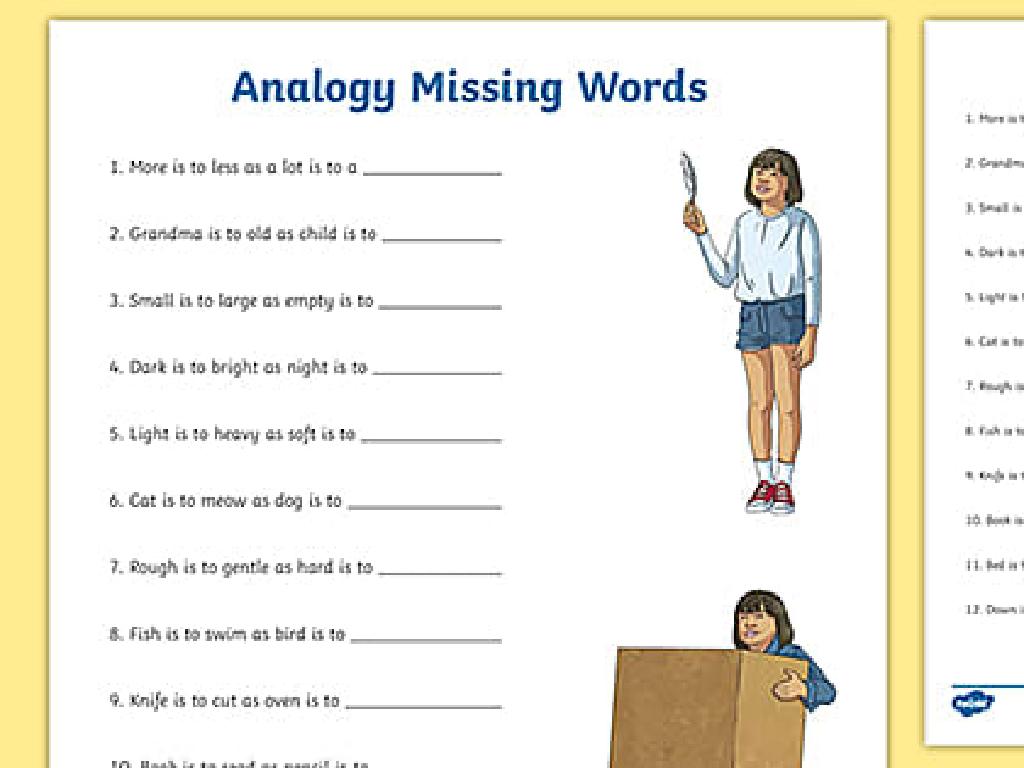Complete The Subtraction Sentence - Up To 20
Subject: Math
Grade: First grade
Topic: Complete The Equation
Please LOG IN to download the presentation. Access is available to registered users only.
View More Content
Welcome to Subtraction!
– Learning to take away numbers
– Subtraction shows how many are left
– If you have 5 apples and eat 2, subtraction tells you 3 are left.
– Practice with numbers up to 20
– We’ll subtract numbers from 1 to 20, like 15 – 7 or 20 – 4.
– Fun subtraction activities
– Use objects like blocks or fingers to visualize subtracting.
|
This slide introduces first graders to the concept of subtraction as a means of finding out how many items remain after some are taken away. Emphasize that subtraction is simply ‘taking away’ and use relatable examples, such as apples, to illustrate this point. Encourage the students to use their fingers or classroom objects to physically represent the subtraction problems, making the concept more tangible. Plan a series of fun activities where students can practice subtracting numbers up to 20, such as subtraction bingo, flashcards, or interactive whiteboard games. These activities will cater to different learning styles and keep the students engaged.
Understanding Subtraction
– Subtraction means taking away
– Finding the difference between numbers
– If you have 10 toys and give away 3, how many do you have left?
– Imagine having apples and giving some away
– Like starting with 5 apples and giving 2 to a friend, you have 3 left!
– Practice with numbers up to 20
– Let’s try: 15 – 5 = ?, or 18 – 2 = ?
|
This slide introduces the concept of subtraction to first graders by relating it to a tangible example, such as having a certain number of apples and giving some away. The goal is to help students understand subtraction as the process of finding out how many items remain after some are taken away. Use relatable scenarios to make the concept clear, and encourage students to visualize the action of subtraction to aid comprehension. Provide simple subtraction problems using numbers up to 20 to practice. During the class, use physical objects like counters or drawings to demonstrate subtraction, and guide students through solving problems together.
Understanding Subtraction Sentences
– Subtraction sentence structure
– Numbers, a minus sign, and an equals sign make up a subtraction sentence.
– Minus sign means ‘take away’
– Equals sign shows the result
– Example: 5 – 3 = 2
– Starting with 5, if we take away 3, we are left with 2.
|
This slide introduces first graders to the concept of subtraction sentences. Explain that a subtraction sentence is like a story that tells us about taking something away from a group and finding out what is left. Emphasize the role of the minus sign as the action of taking away and the equals sign as a way to show what we have after the action. Use the example provided to illustrate the concept with tangible objects like blocks or fingers to help them visualize the subtraction. Encourage the students to think of their own examples and practice writing subtraction sentences from those scenarios.
Let’s Practice Subtraction Together!
– Understand subtraction problems
– Solve with teacher’s help
– Example: 10 birds, 4 fly away
– Start with 10 birds, if 4 leave, subtract 4 from 10
– Find how many birds are left
– Use fingers or objects to count the remaining birds
|
This slide is designed to engage first-grade students in a guided practice of subtraction. Start by explaining that subtraction means taking away from a group. Show them a visual example with 10 birds and demonstrate 4 flying away. Encourage the students to solve the problem together with you by counting backwards from 10 to find out how many birds are left. Use physical props like toy birds or illustrations to make the problem more tangible. After solving the example together, give the students similar problems to solve on their own, using objects they can touch and count. This hands-on activity will help solidify their understanding of basic subtraction.
Your Turn to Try: Subtraction Sentences!
– Complete the subtraction sentence
– Fill in the blank: 15 – ___ = 7
– Count carefully to find the answer
– Make sure to count backwards from 15
– Use your fingers or objects to help
– Counting objects like blocks can make it easier
– Check your work when finished
– Double-check to ensure the answer makes sense
|
This slide is an interactive activity for students to practice completing subtraction sentences. Encourage them to use counting as a strategy to find the missing number in a subtraction equation. They can use their fingers, counting objects, or draw pictures to visualize the subtraction process. Remind them to start from the larger number and count backwards. After finding the answer, they should check their work to confirm it’s correct. For example, if the sentence is 15 – ___ = 7, they should count backwards from 15 to 7 to find the missing number is 8. Provide several examples and allow students to work through them at their own pace, offering help as needed.
Using Objects to Subtract
– Use blocks or fingers for subtraction
– Count out blocks, then remove some to subtract
– Touch and move objects to subtract
– Physically moving objects helps understand subtraction
– Visualize subtraction as ‘taking away’
– Imagine having 5 apples and giving away 2
– Practice with real-life examples
– Try subtracting pieces of fruit, toys, or crayons
|
This slide introduces the concept of using tangible objects to teach subtraction to first graders. By using blocks, fingers, or other manipulatives, students can physically engage with the math problem, making the abstract concept of subtraction more concrete and understandable. Encourage students to visualize the process as ‘taking away’ items from a group. During the activity, guide them to count the total number of objects first, then subtract a certain number and count what’s left. Provide various real-life examples for practice, such as subtracting pieces of fruit during snack time or toys during playtime. This hands-on approach will help solidify their understanding of basic subtraction.
Subtraction Story Time
– Listen to a subtraction story
– Help solve the subtraction problem
– Use the story details to find the missing number
– Understand the story’s ending
– Share your answers with the class
– Tell us how you got your answer
|
This slide introduces an interactive class activity that combines storytelling with subtraction practice. Start by telling a simple story that involves subtraction, such as two friends sharing cookies and one friend eating some, leaving a certain number left. Ask the students to listen carefully to the details of the story, as these will provide the clues needed to solve the subtraction problem. After the story, work through the subtraction sentence together, using the details to find out how many are left. Encourage the students to explain their thought process when sharing their answers. This activity will help students practice subtraction in a fun and engaging way, reinforcing their understanding of the concept up to 20. Prepare several stories in advance to cater to different levels of understanding within the class.
Class Activity: Subtraction Bingo
– Let’s play Subtraction Bingo!
– Complete subtraction sentences
– Example: 15 – 7 = ? What number do you cover?
– Cover the number on your Bingo card
– Shout ‘Bingo!’ when you complete a row
|
This interactive activity is designed to help first graders practice and reinforce their subtraction skills in a fun and engaging way. Prepare Bingo cards with numbers up to 20 in advance. Explain to the students how to complete a subtraction sentence and demonstrate covering the correct number on the Bingo card. Monitor the students as they play to ensure they are subtracting correctly. Be ready with small prizes or accolades for the winners to encourage participation. Possible variations of the activity could include playing in pairs, using different subtraction ranges, or having multiple winners per round.
Review: Subtraction Sentences
– Subtraction means taking away
– Minus sign (-) is used for subtraction
– Subtraction sentences show number change
– Example: 15 – 7 = 8 shows 7 taken from 15 leaves 8
– Practice with numbers up to 20
– Let’s try some together: 12 – 4 = ?, 18 – 6 = ?
|
This slide is a recap of what we’ve learned about subtraction. Subtraction is the process of taking one number away from another. We use the minus sign to indicate subtraction in equations. Subtraction sentences are a way to visualize how the value of numbers decreases as we subtract. It’s important for students to understand that these sentences show the relationship between the starting number, the number we take away, and the result. To reinforce this concept, engage the students with practice problems using numbers up to 20, ensuring they grasp the concept of subtraction as a form of taking away. Encourage them to use their fingers or counters to help them visualize the subtraction process.
Goodbye and Great Job!
– Fantastic job with subtraction!
– Practice makes perfect
– Keep practicing subtraction up to 20
– Remember your homework
– Complete your subtraction homework
– Aim to be a subtraction star!
|
This slide is meant to congratulate the students on their hard work during the subtraction lesson and to encourage them to continue practicing at home. Remind them that consistent practice is key to becoming proficient in subtraction. The homework will reinforce today’s lesson and help them become more confident in completing subtraction sentences up to 20. Offer praise and positive reinforcement to motivate the students, and let them know that you believe in their ability to excel in math. Provide some simple subtraction problems as examples for homework and remind them to bring any questions they have to the next class.






